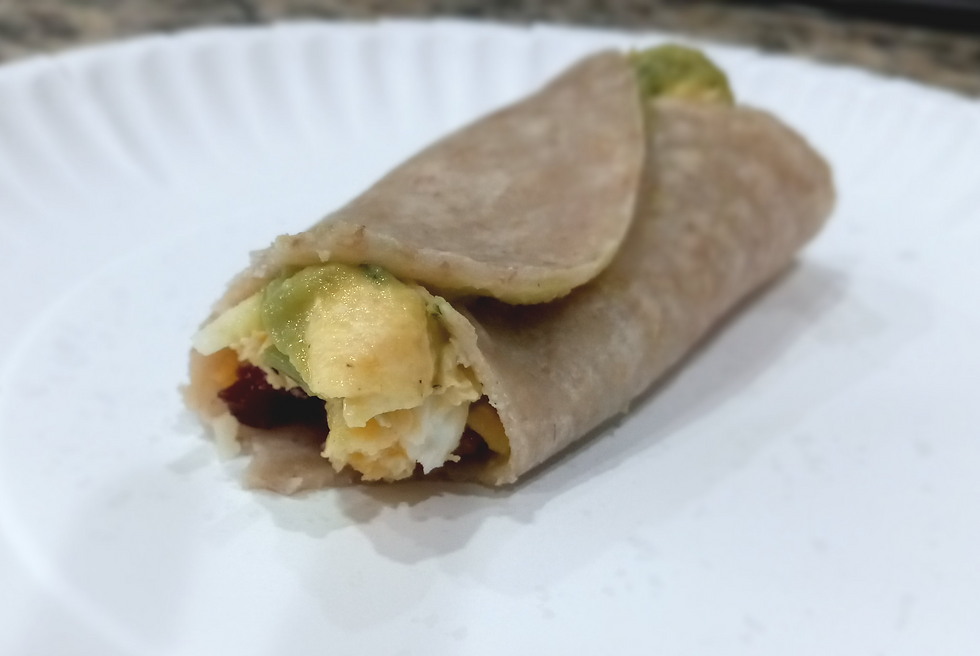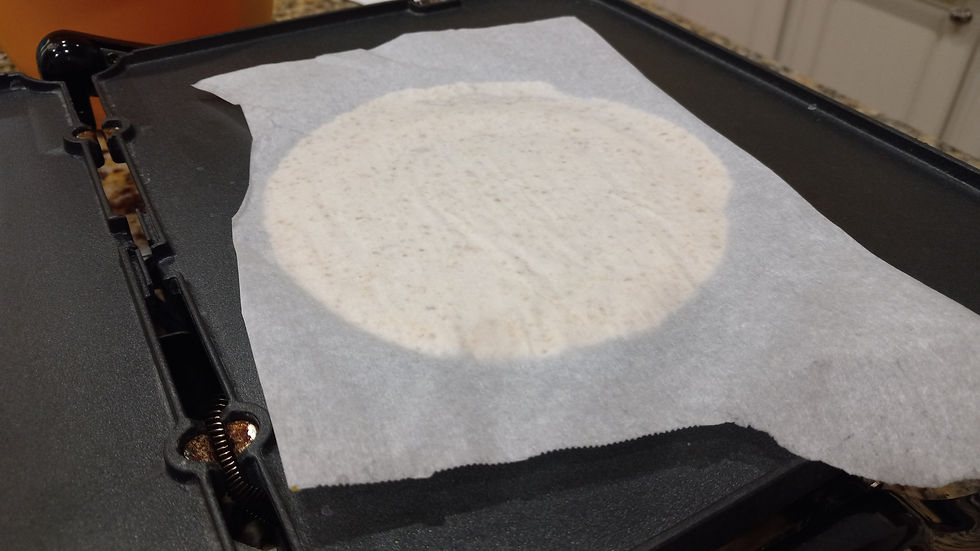Paleo Tortillas
- morgan
- Feb 17, 2023
- 4 min read
Updated: Jan 19, 2024
Soft, flexible, delicious, and full of goodness. Who's ready for tacos?

For the printable recipe click here.
We love Mexican food, and we REALLY love tacos. In our pre-paleo days, we were obsessed with the bakery-fresh tortillas at our local grocery store--the best traditional tortillas on the market by far.
The first time we did a Whole30, we did a lot of lettuce-wrap tacos and even tried some jicama “tortillas,” but the monsters were not impressed. Post Whole30, we made chia tortillas on and off for a long time, but still, the monsters weren’t really on board. We finally found a winner in store-bought almond-flour tortillas, but the price tag was a deterrent.
Eventually, we hit the kitchen and came up with our own version, and now the only problem is making enough to keep up with demand on taco night!
This paleo tortilla recipe has a relatively simple ingredients list with only four ingredients if you don't count water and sea salt. No xanthan gum needed! Cassava flour is the main ingredient, followed by almond flour and flax meal.
While tapioca starch (sometimes called tapioca flour) comes from the same plant as cassava flour, they are not the same product. Cassava flour is ground from the whole cassava storage root, while tapioca starch is the extracted starch of the root in isolation. Therefore, cassava flour retains considerably more of the fiber and nutrients. For more information on cassava flour, check out my post "Is Cassava Flour Whole30? Everything You Need to Know about Cassava Flour on the Whole30 and Beyond."
I like the trifecta of cassava flour, almond flour, and flax meal in these grain-free tortillas for the best of flavor, texture, and nutrition. My fat of choice for the tortilla dough is palm shortening. It has no hydrogenated oils like traditional shortening, but it has a higher melting point than coconut oil, which helps the tortillas achieve the right texture and workability. If palm shortening is unavailable, use coconut oil in a pinch, or use bacon grease if not vegan.
While this paleo tortillas recipe will definitely be a welcome addition to the repertoire of those with dairy or gluten dietary restrictions or adhering to a paleo diet, the best part is that I actually prefer them to corn tortillas and most regular flour tortillas, which can sometimes have a pasty flavor. These are relatively soft tortillas compared to all the recipes for coconut flour tortillas or strictly cassava flour tortillas that I have tried.
Tips for the best ever paleo tortillas
A funny quirk of this recipe is that it calls for warm water. Chicken stock or bone broth could be a good swap for extra flavor if desired, and I suppose you could substitute the water for almond milk or coconut milk if you wanted to. The important thing for best results is that the water or other liquid is warm-to-hot. Cold or room temperature water makes the dough less pliable.
If desired, you could flavor these tortillas with garlic powder, onion powder, or chili powder, but I think they are perfect plain--and so good for breakfast tacos!

The easiest way to portion out the dough for the tortillas is to use a large (3T) cookie scoop. This is the perfect amount of dough for tacos, but your tortillas may be a little small if you're dreaming of a paleo burrito.

You can definitely roll these paleo tortillas out with a rolling pin or flatten them with a cast iron skillet, but if you’ll be making them with any regularity, the best way by far is using a tortilla press. They’re relatively affordable, easy to clean, don’t take up a ton of cabinet space, and pretty fun to use.

The mixing and shaping of the dough is pretty straightforward, but transferring the flattened dough to the griddle or cast iron skillet is by far the most difficult part. Be prepared to give yourself a little grace for the process as you get into the swing of things, and it’ll pay off in the end.
Placing the dough ball between two pieces of parchment paper before pressing helps with the pressing and the transfer. Just peel the top piece off carefully, plop the tortilla on the griddle, wait about 30 seconds, and carefully peel off the second piece of parchment.

I use a flat griddle to cook these so that I can cook a couple at a time, but you could use a hot skillet or non-stick pan if desired. You'll cook the tortillas just a couple of minutes on each side until they get just a few golden brown spots.

Here's what you'll need:
1 ½ cup + 1 T cassava flour
¾ cup almond flour
¼ cup flax meal
1 tsp fine sea salt
¼ cup palm shortening
1 ¼ cup hot water
Here's what you'll do:
In a medium-sized bowl, whisk together the dry ingredients (cassava flour -salt).
Use a pastry cutter to cut in the palm shortening till the mixture has a sandy consistency and no large chunks of shortening remain.
Stir in the hot water, mixing very well to form the dough. Let sit 20 minutes. Meanwhile, preheat your griddle to 425 or preheat your skillet over medium-high heat and cut two pieces of parchment paper to be about 6 x 6 inches each.
Use a large (3T) cookie scoop to scoop a ball of dough and place between the two pieces of parchment paper. Place on your tortilla press, and press firmly to flatten the dough.
Carefully peel off one piece of the parchment and place the tortilla on the griddle. Cook about 30 seconds before carefully peeling off the second piece of parchment. Cook 1-2 minutes, or just till you see a few light, golden-brown spots, per side. Don’t overcook. Repeat with remaining dough. Store leftover tortillas in an airtight container in the fridge for up to one week.

For the printable recipe click here.
If you liked this post, you may also enjoy . . .


Comments